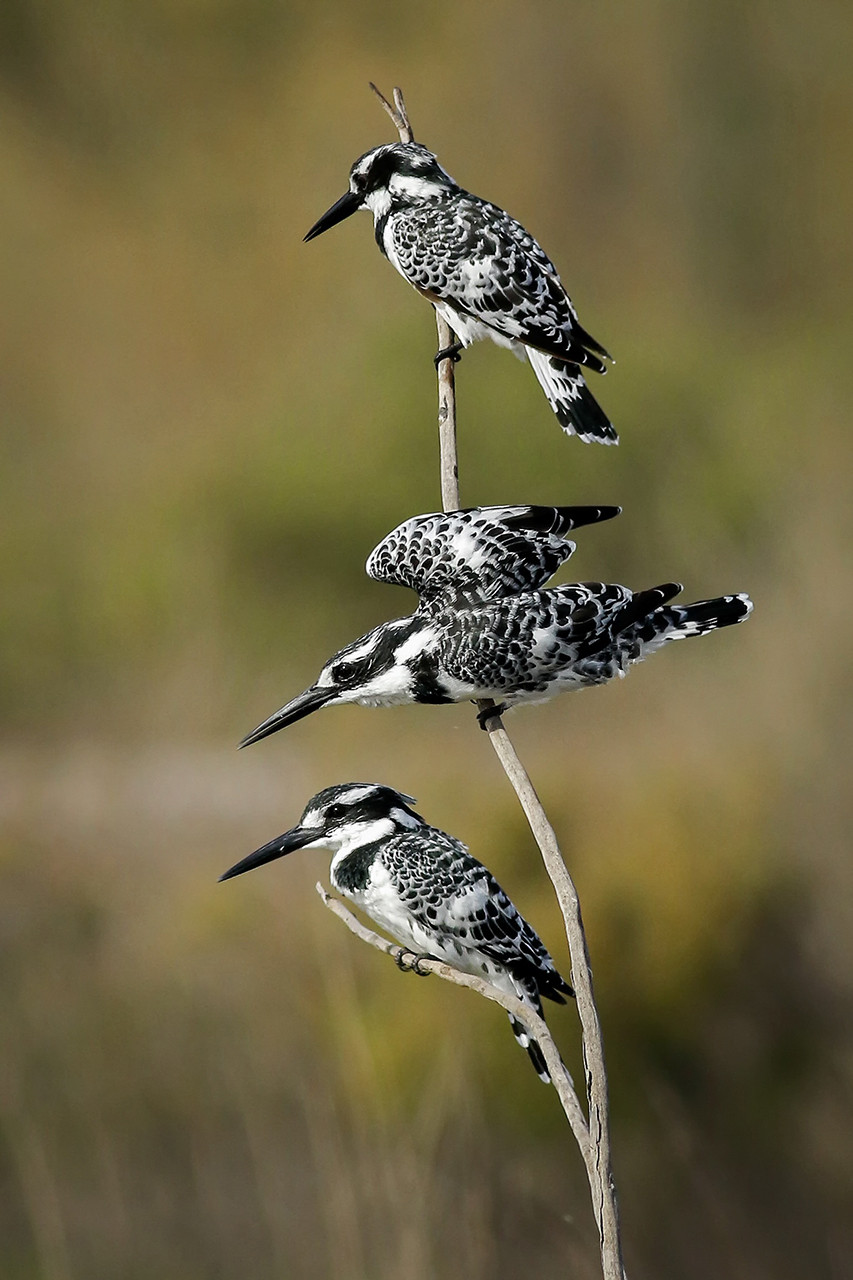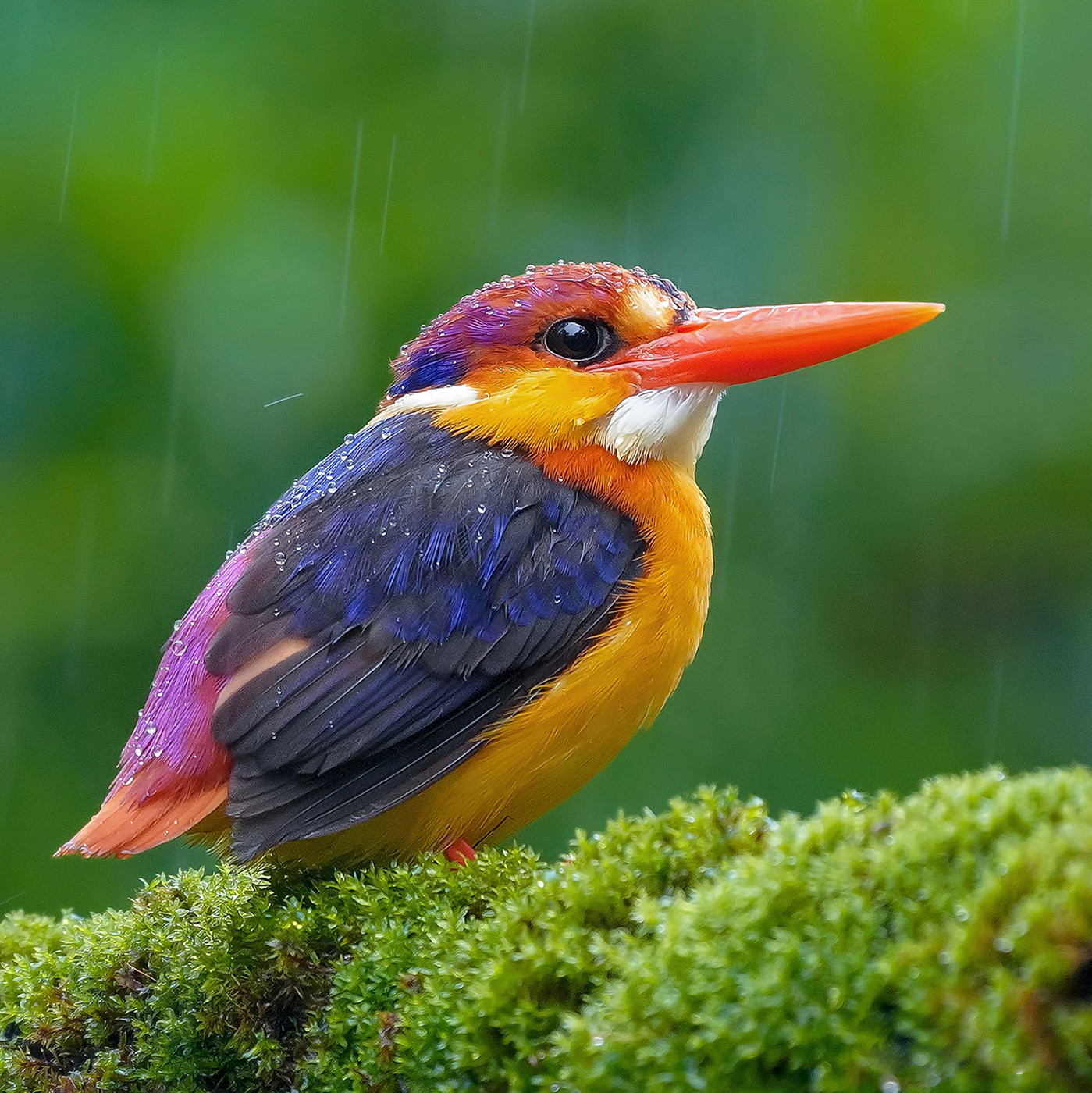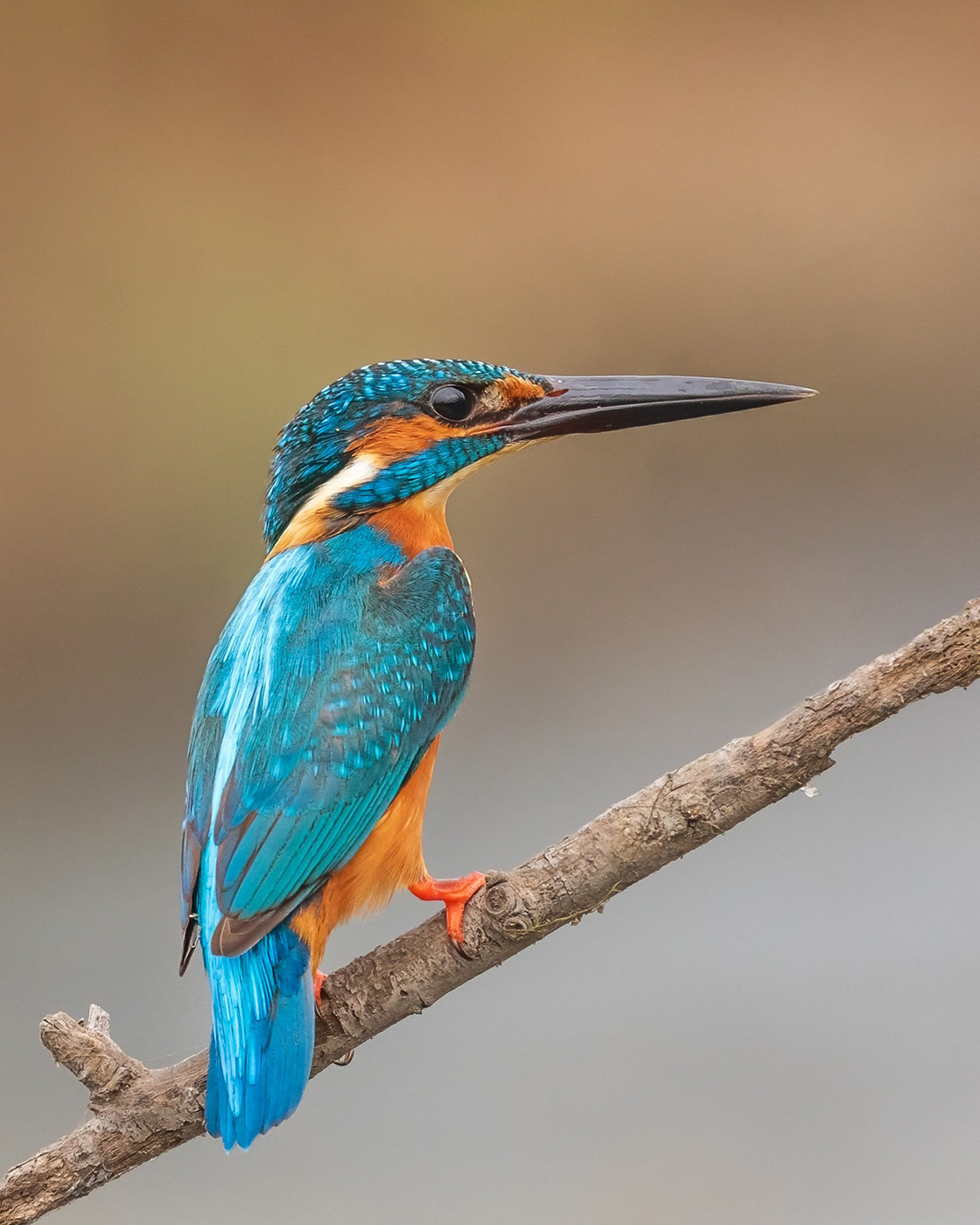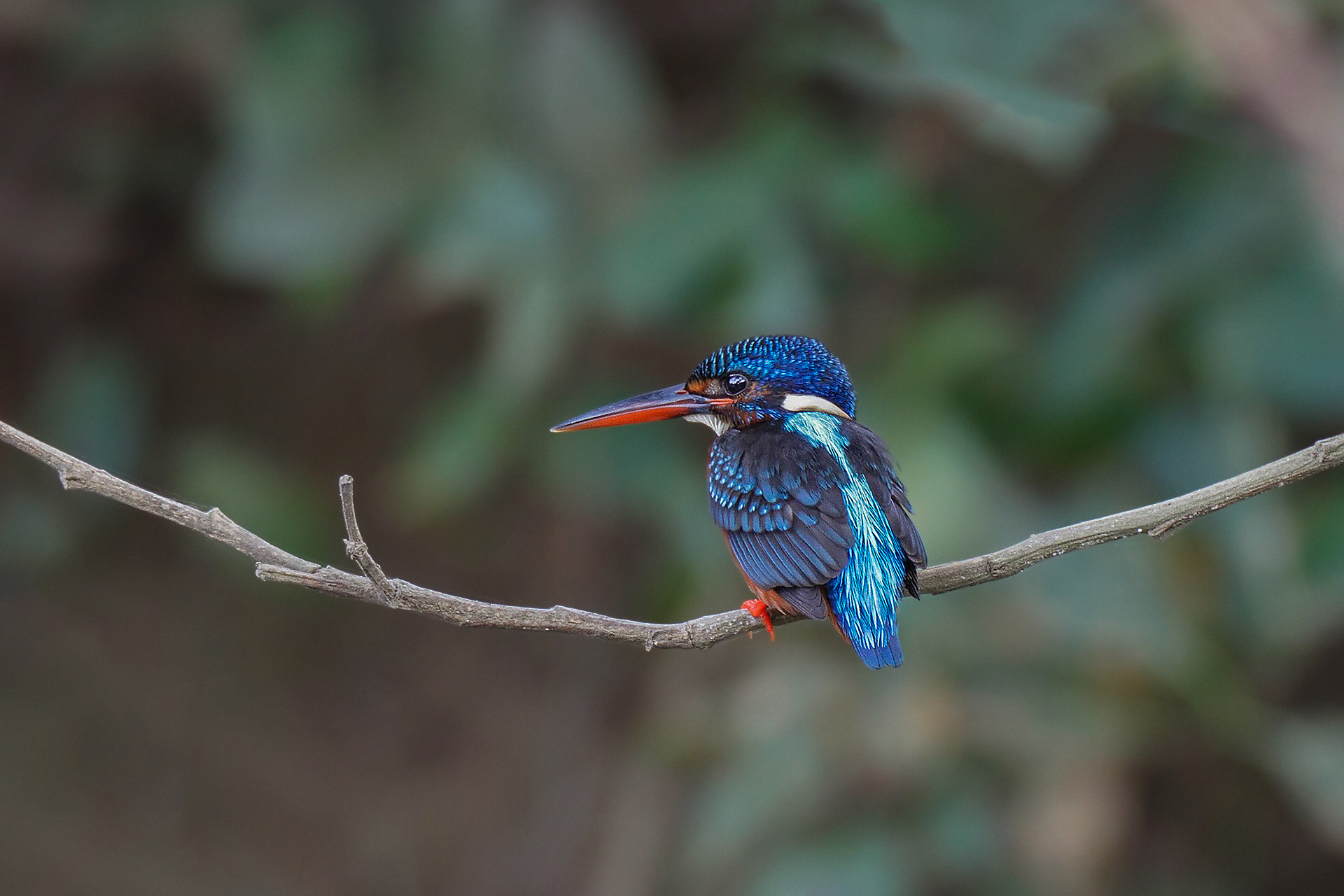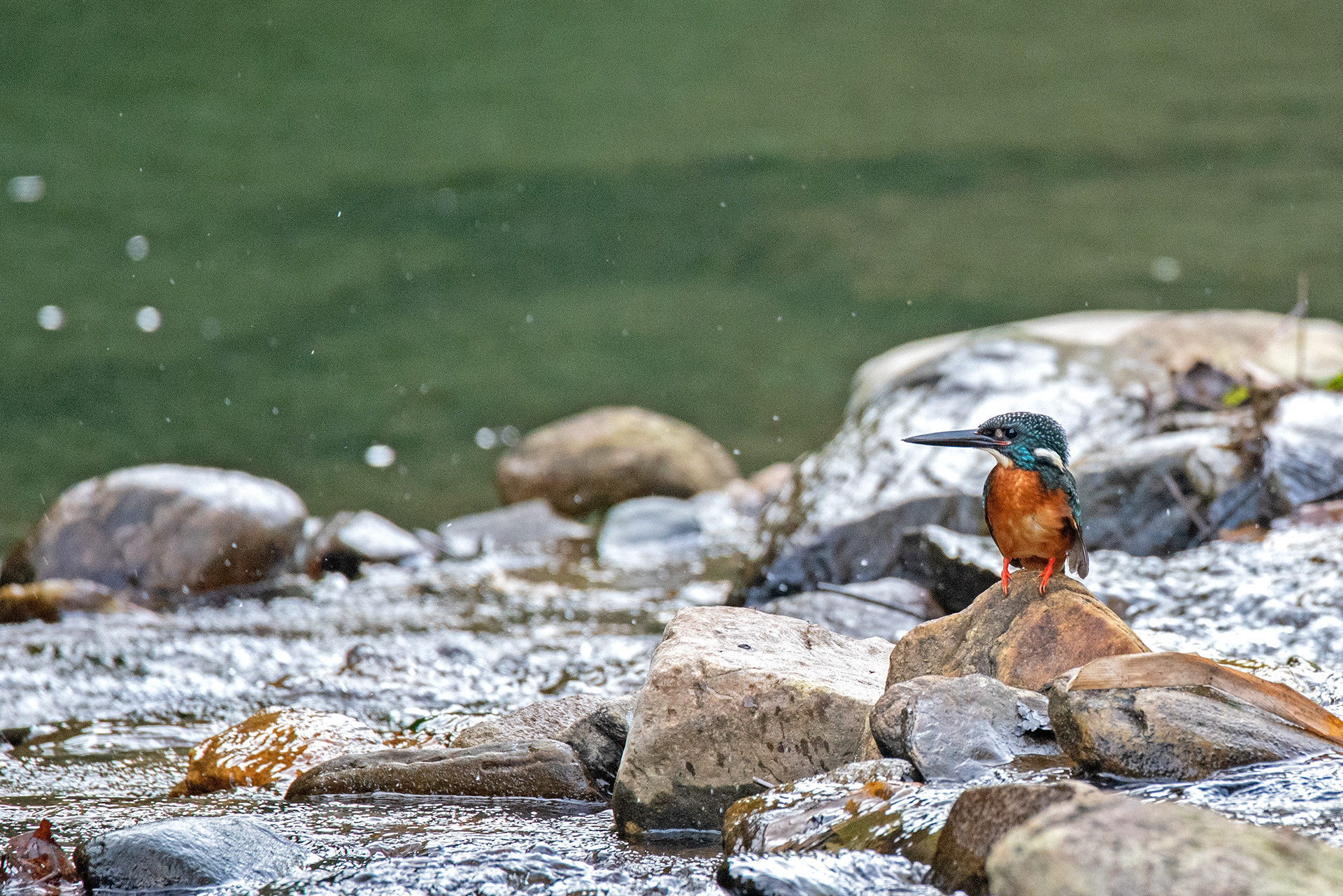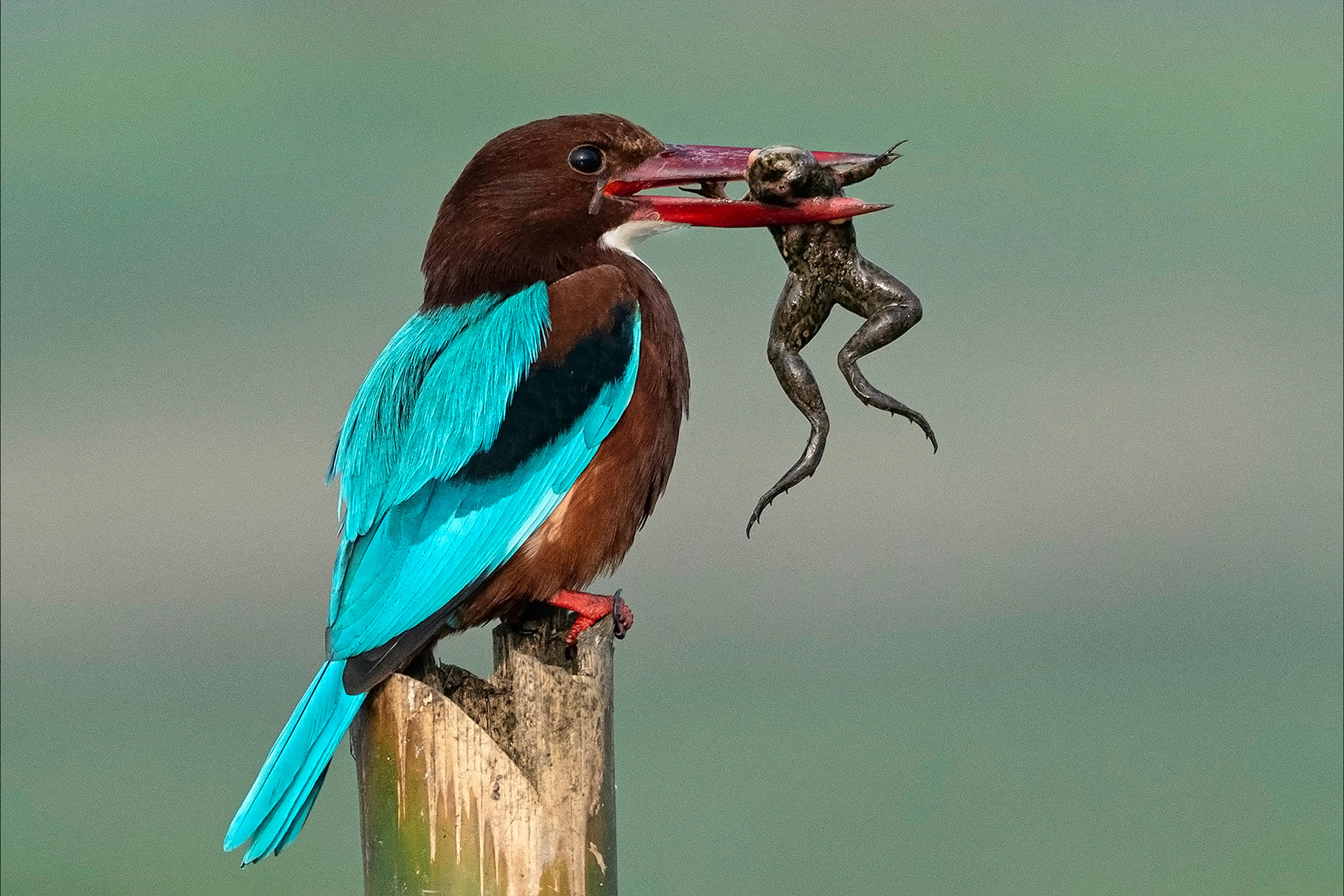If you are standing next to a water body and see a flash of colour swoop into the water from a nearby tree, you most likely just spotted a kingfisher in action. Kingfishers are divided into three groups; Alcedinidae or River Kingfishers, Halcyonidae or Tree Kingfishers and Cerylidae or Water Kingfishers. Although the colours vary between species, most kingfishers have long, sharp beaks and good vision that aids them in spotting their prey from a distance.
Kingfishers are known for their unique hunting traits. They hunt for fish underwater and carry it back to their perch, beat the catch to death on a branch and then consume the fish head first by tossing it in the air. Their eyes are protected by membranes that help them dive into water and locate their prey. Their eyes can also adjust to the light refracting from the water surface, helping them gauge the depth of a water body.
India is home to 12 species of kingfishers, and a cursory glance will tell you that these species enjoy safe habitats across the country. Most of them are designated as Least Concern from a conservation point of view; the Blyth’s Kingfisher being the only resident species that has a Near-threatened conservation status. But if you look closer, you will find that the population trend for a majority of the species is decreasing. Fragmentation of forest land and pollution of water bodies is greatly affecting their local populations. Consider the Brown-winged Kingfisher, which is found in the mangroves of the Sunderbans. This species is impacted by the clearing of mangrove forests, declining fish populations, and the reduced freshwater supply in the region.
In this story, we travel through the Indian subcontinent, spotting and listening to kingfishers and sharing basic information about these skilful fishers. We hope that through increased awareness, the kingfishers of India will find safe spaces and continue to thrive.
Oriental Dwarf Kingfisher (Ceyx erithaca)
IUCN Redlist Status: Least Concern
A riot of colours, Oriental Dwarf Kingfishers are also known as Rufous-backed Kingfishers. With blue, black and purple upperparts, yellow underparts and a bright red bill, these birds are easily mistaken for a flower amidst the green patches they occupy. They inhabit tropical moist and moist lowland forests along with densely vegetated plantation areas and rivers and streams. These colourful birds feed on insects such as beetles, cicadas, wasps and lizards and frogs. Unlike other kingfishers, they only occasionally hunt for fish.
Pied Kingfisher (Ceryle rudis)
IUCN Redlist Status: Least Concern
With a distinct black and white appearance, Pied Kingfishers are inhabitants of a wide range of habitats that include forests, grasslands, lakes, rivers, mangroves and coasts. They are frequently observed in small flocks or hovering over water bodies in search of food. While many species of kingfishers return to their perch to eat their catch, Pied Kingfishers can swallow them mid-flight, which enables them to hunt over large water bodies. They mainly feed on fish and also consume aquatic insects and crustaceans.
Crested Kingfisher (Megaceryle lugubris)
IUCN Redlist Status: Least Concern
With distinct black and white striations and a prominent crest, Crested Kingfishers are the largest of the kingfisher species in India. They are mainly seen in the northern part of India, especially in the foothills of the Himalayas, where they reside near large rivers. Perched on trees, Crested Kingfishers keep a close watch on their surroundings while locating a prey. They feed on fish, shrimp, crabs and amphibians.
Brown-winged Kingfisher (Pelargopsis amauroptera)
IUCN Redlist Status: Least Concern
The Brown-winged Kingfisher is a large kingfisher species with an orange head and underparts, brown wings and a distinct blue rump. They are coastal birds found in mangroves, mudflats and tidal regions. Occasionally they are also found near inland freshwater wetlands. Like many kingfisher species, these birds wait on perches looking for fish, crabs, shrimps and frogs, diving into the water to catch their prey.
Black-capped Kingfisher (Halcyon pileata)
IUCN Redlist Status: Least Concern
Medium-sized birds, Black-capped Kingfishers, as the name suggests, have a prominent black head, striking blue and black wings and rufous underparts. They are found near coastal areas, wetlands and in mangrove forests. They have also adapted to man-made ecosystems, including agricultural fields and gardens. They are solitary hunters and tend to chase away intruders, including their own species, from their hunting territory. They primarily feed on fish, but also consume lizards, crabs and insects.
Collared Kingfisher (Todiramphus chloris)
IUCN Redlist Status: Least Concern
Collared Kingfishers or White-collared Kingfishers get their name from the white collar patch on their necks. These blue-and-white birds are mainly found in forests and grasslands, and occupy a range of habitats like lowland forests, subtropical dry grasslands, mangroves, marshlands and shrublands. They use open perches to spot their prey of insects, snails, lizards, small fish and worms. Rare sightings of leucistic (having whitish plumage due to a lack of pigment) Collared Kingfishers have also been recorded.
You may also like to read
Common Kingfisher (Alcedo atthis)
IUCN Redlist Status: Least Concern
Also known as the Small Blue Kingfisher, these colourful birds can be identified by their orange-blue plumage. They are found in grasslands and wetlands, often next to still or slow-moving water bodies. They prefer to hide in the canopy of trees next to waterbodies teeming with small fish. They are often spotted due to their shrill, high-pitch calls. Common Kingfishers mainly consume fish. Once the kingfisher captures its prey, it flies back to its perch, beats the fish against the branch to kill it and then consumes it head first.
Blue-eared Kingfisher (Alcedo meninting)
IUCN Redlist Status: Least Concern
Also called the Malaysian Kingfisher, the Blue-eared Kingfisher looks similar to the Common Kingfisher except for the blue ear stripes. Notice the reddish lower mandible? This indicates a female kingfisher while males have a white lower mandible. They sport plumage in varying shades of blue and have reddish-brown underparts. They occupy a range of habitats, including tropical and subtropical lowland forests, mangroves, plantation areas, man-made canals and other water bodies. Like their other kingfisher counterparts, they perch near water bodies on densely shaded trees looking for small fish and aquatic insects to feed on.
Blyth’s Kingfisher (Alcedo hercules)
IUCN Redlist Status: Near Threatened
Largest among the kingfishers that belong to the Aldeco family, Blyth's Kingfishers are rare birds mainly found in northeast India. They have flattened long beaks, black-brown upperparts with blue specks and rufous underparts. They are seen near inland wetlands and streams within evergreen forests. They prefer low-hanging branches as perches and are known to return to the same spot to hunt for food. They predominantly feed on fish. Destruction of evergreen forests, fragmentation and pollution of water bodies are some of the biggest threats to this species.
Stork-billed Kingfisher (Pelargopsis capensis)
IUCN Redlist Status: Least Concern
A large kingfisher species, the Stork-billed Kingfisher has buff underparts, bright blue plumage and bright red bill and feet. The bird inhabits forests, wetlands, freshwater and marine ecosystems. They prefer large water bodies lined with thick vegetation. They hide in the vegetation and swoop down to catch potential prey. Like other kingfisher species, Stork-billed Kingfishers fly back to their perch to feed on the catch. They hunt for fish, crabs, frogs and rodents.
Ruddy Kingfisher (Halcyon coromanda)
IUCN Redlist Status: Least Concern
Medium-sized kingfishers, Ruddy Kingfishers have a rustic red appearance that fades towards the underparts. There are ten subspecies of Ruddy Kingfishers, of which about two are found in India. They are mainly seen in the northeastern part of the country and in the Andamans. Their preferred habitats are mangroves and temperate forests with rivers and streams. Ruddy Kingfishers mainly feed on insects like dragonflies, cicadas, grasshoppers and beetles.
White-throated Kingfisher (Halcyon smyrnensis)
IUCN Redlist Status: Least Concern
Identified by their distinct brown head and a white throat patch, White-throated Kingfishers are a common sight near water bodies and agricultural fields. They prefer to stay perched on elevated structures or on trees. While most species of kingfishers primarily feed on fish and dive into water looking for their prey, White-throated Kingfishers prefer to hunt for their prey in wooded regions, rarely going underwater. They mainly feed on insects, reptiles and rodents.
